If you’re interested in adding unique chickens to your flock, consider the Cream Legbar chicken. This exciting breed was developed in the 1900s and is known for its striking blue eggs. In this article, we take a comprehensive look at everything you need to know about the Cream Legbar chicken, from its history and appearance to its eggs and meat production. We’ll also touch on its personality traits. By the end of this article, you should have a good idea of whether or not the Cream Legbar chicken is suitable for your flock.
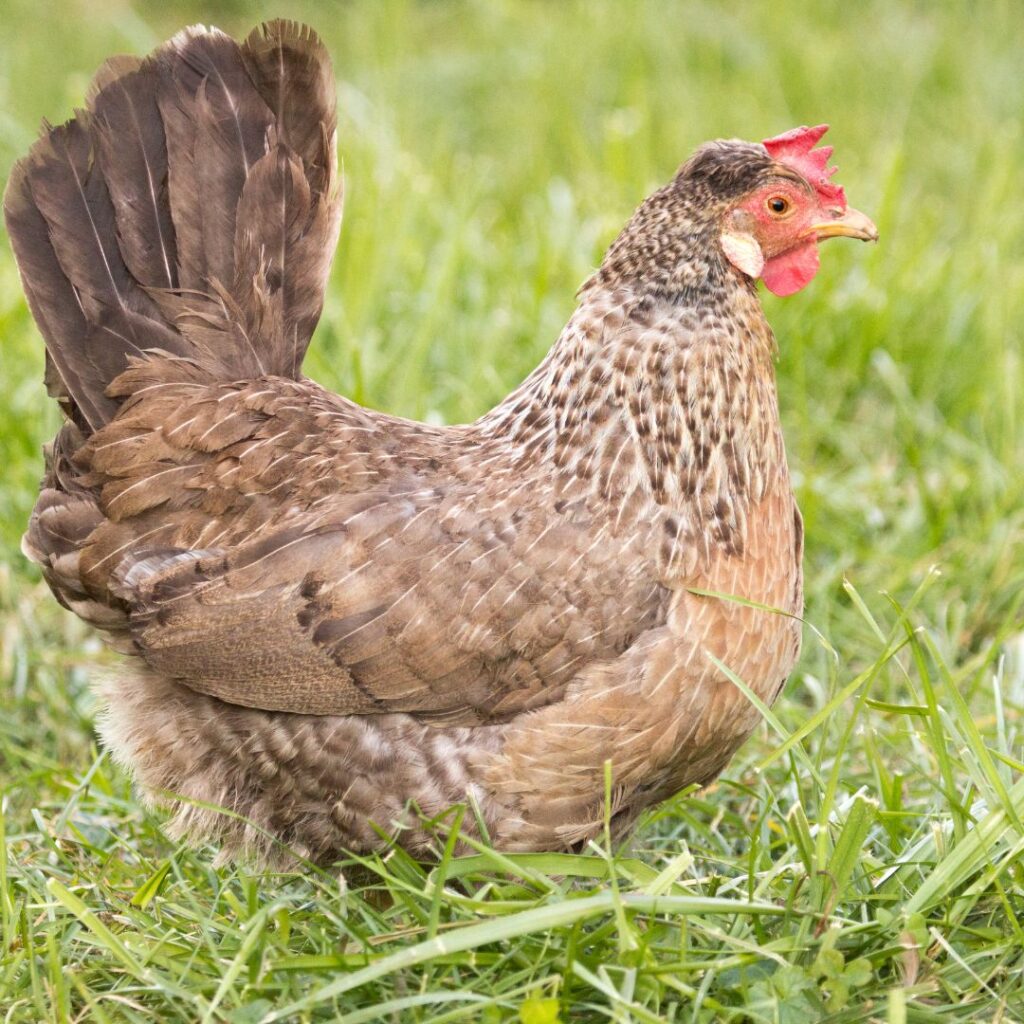
The History of Cream Legbars
The Cream Legbar chicken is a rare and unique British autosexing breed. This breed was created at the Genetical Institute of Cambridge University in the earlier part of the twentieth century by Reginald Crundall Punnett and Michael Pease.
The Cream Legbar Chicken is a breed of chicken that first became standardized in the mid-1940s and early 1950s.
These chickens were one of the first autosexing breeds based on brown Leghorns’ utility strains. The Gold and Silver Legbars were some of the first autosexing breeds based on brown Leghorns’ utility strains.
They were standardized in the mid-1940s and early 1950s, respectively, and managed to survive throughout the Second World War.
The Rare Poultry Society covered both varieties until recently, when the Autosexing Breeds Association reformed, with only the Gold occasionally seen in the poultry world.
Interestingly, Mr. Michael Pease produced this breed involuntarily, attempting to improve on Gold Legbars. Because of a dominant white gene from crossing with White Leghorns, other colors transferred to offspring, which led to ‘interestingly cream-colored’ chicks when mated again.
These first Cream Legbars were crestless and laid white eggs but later incorporated blue through the Araucana crossing. Although not favored by markets initially, Cream Legbars are now benefiting from renewed success through the work of dedicated fanciers.
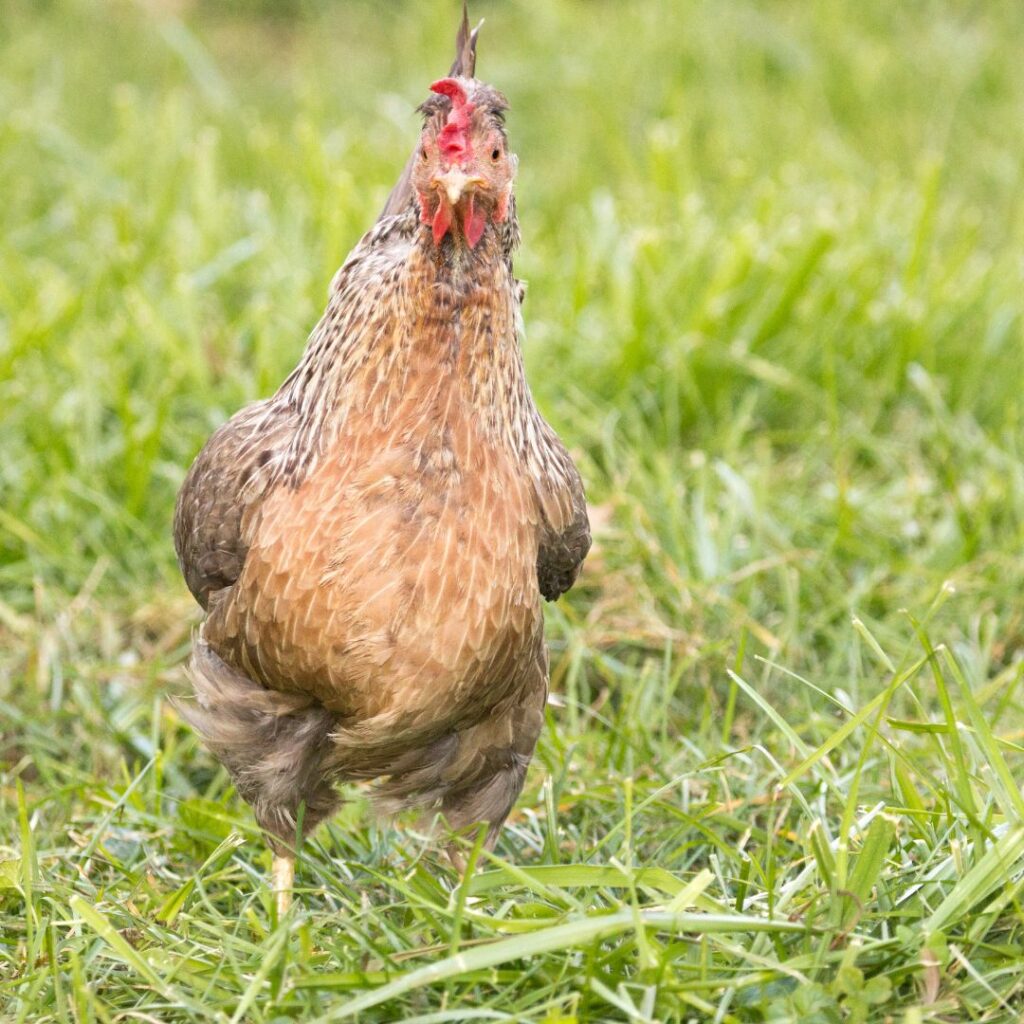
Is The Name Legbar or Leg Bar?
The breed’s name is one-word Legbar, pronounced just like it reads. The name was most likely a combination of the Leghorn (leg) and Barred Rock (bar) contributions to the breed development.
Cream Legbar Chicken Breed Standard and Appearance
The Cream Legbar is a newly-developed breed of chicken first presented at the 1947 London Dairy Show. It is characterized by its cream coloring, friendly temperament, and ability to lay large numbers of blue eggs. The recessive cream color, the dominant blue egg color, and the crest make this breed unique compared to its Legbar relations. Professors R.C. Punnett and Michael Pease discovered these characteristics through genetic experimentation.
Cream Legbar rooster vs hen. The standard weights for hens are 5 pounds, and the cream legbar rooster is 7- 7 1/2 pounds (Pullet is 4 1/2 pounds and Cream Legbar cockerel is 7 pounds).
This breed is sometimes called a Crested Cream Legbar.
One of the most defining characteristics of these birds is their crest. These crests are made up of feathers that grow from behind the bird’s comb, on top of its head. This crest is found on hens and roosters, thus the Crested Cream Legbar.
This chicken breed has a single red com and red wattles. The Cream Leghorn has white or Cream earlobes. Their skin, legs, and beak are yellow.
It has a triangular-shaped body with a long, flat back. This breed has a long neck and is full-breasted. It is moderately broad at the shoulders, with a flat back that slopes slightly. The wings are positioned close to the body.
The Cream Legbar chicken’s feathers are a mix of light cream and gray colors. The males have distinct barring on their tails and breasts. The female barring is less distinct, with a salmon color on her neck and breast.
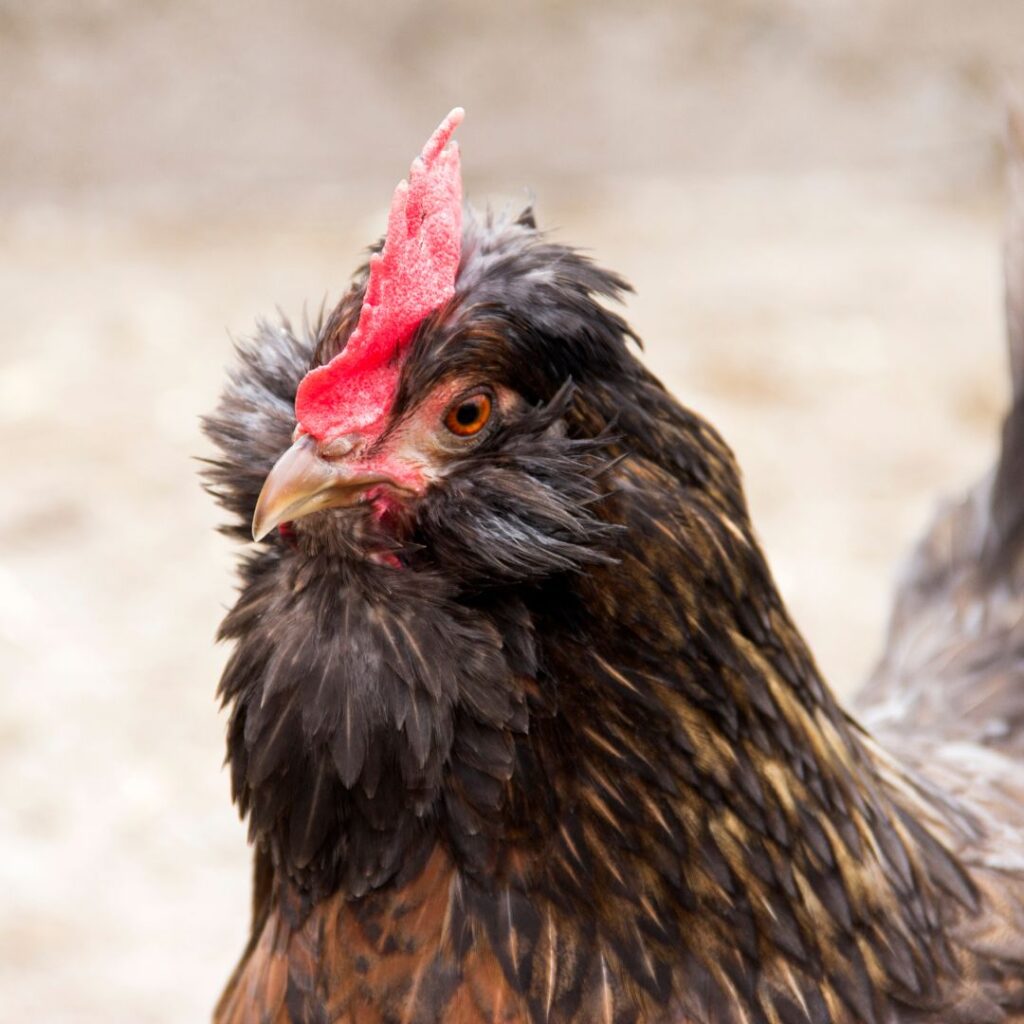
What do Baby Cream Legbar Chicks Look Like?
The Cream Legbar chick is auto-sexing from when they hatch, meaning you know if you have a male (rooster) or female (a hen) from day one. This is a huge benefit for choosing birds for egg-laying capabilities. After all, most people who buy chickens are looking for egg-production birds and want to purchase females (hens).
Male Legbar chicks will have a light spot on their heads, and female chicks don’t.
Are the Cream Legbars Friendly Birds?
Cream legbars are friendly and have an easygoing nature, making them a great addition to a mixed flock. They also tend to be less aggressive towards each other and will likely get along well with other standard-size breeds. They’d do well in flocks with Cochin, Orpingtons, and other similar personality and friendly breeds.
Their lovely blue eggs make them a colorful addition to any coop. So if you’re hoping for a peaceful cohabitation of chickens, the Cream Legbar is worth considering.
Are Cream Legbar Roosters Aggressive?
Roosters are often more aggressive than other chickens and have a stronger natural desire to protect their flock.
Are Cream Legbar Chickens Noisy?
Considering keeping chickens and noise is a concern, looking into different breeds can make all the difference. While all hens will cackle around egg-laying time, some breeds have a reputation for being particularly loud and chatty.
Cream Legbar chickens fall somewhere in the middle – they may make a bit more noise if kept in confinement but are generally not considered excessively noisy compared to other breeds.
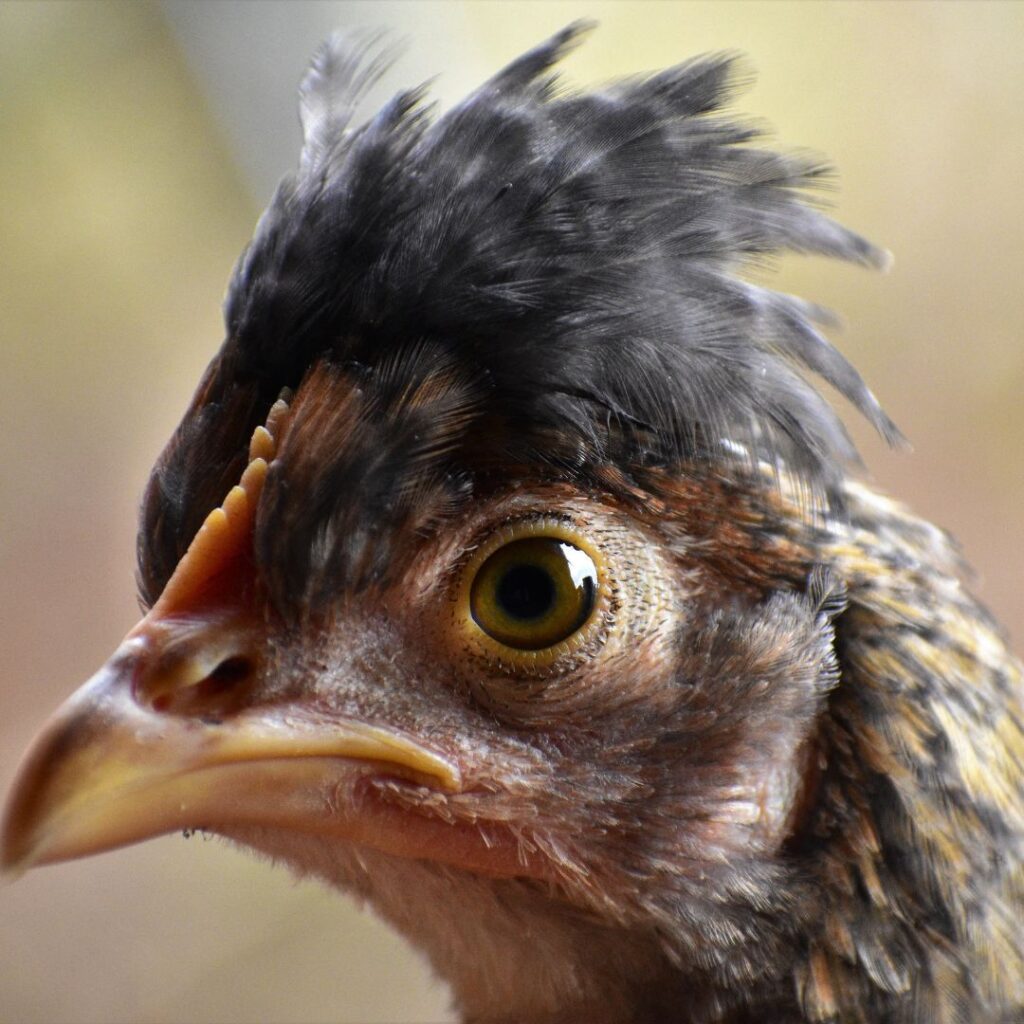
Breed Variations of the Legbars Chickens
The American Poultry Association does not recognize the Cream Legbar. The Legbar is a rare chicken breed recognized by the Poultry Club of Great Britain since 1958. It was under the Rare Poultry Society until the Autosexing Breeds Association was re-established.
The Poultry Club of Great Britain recognizes three Legbar colors: In addition to the cream legbar, there are:
Gold Legbar – The Gold Legbars are unique in their history and appearance. Created in 1945 through a cross between Brown Leghorns and Barred Plymouth Rocks, this Golden Legbar became the foundation for the other legbar varieties.
Compared to their counterparts, Gold Legbar roosters feature more vibrant coloring, while hens have warm brown bodies and deeper salmon chests.
Silver Legbar: The Silver Legbar chicken was officially standardized in 1951. This new breed was created by breeding Gold Legbar, White Leghorn, and Silver Cambar.
The Silver Legbar is a stunning breed of chicken with distinct markings in both male and female birds. The male sports silver neck feathers sparsely barred with dark grey and tipped off to pure silver. The breast, belly, and wing coverts are also marked with dark grey and silver-grey barring. The saddle, back, shoulder coverts, and wing bows have silver feathers with dark grey barring, while the tail and tail coverts have dark grey and silver-grey barring.
The female Silver Legbar has a silver neck hackle barred with black. Her breast is salmon in color with light barring, while her wings and tail are silver-grey with indistinct bars.
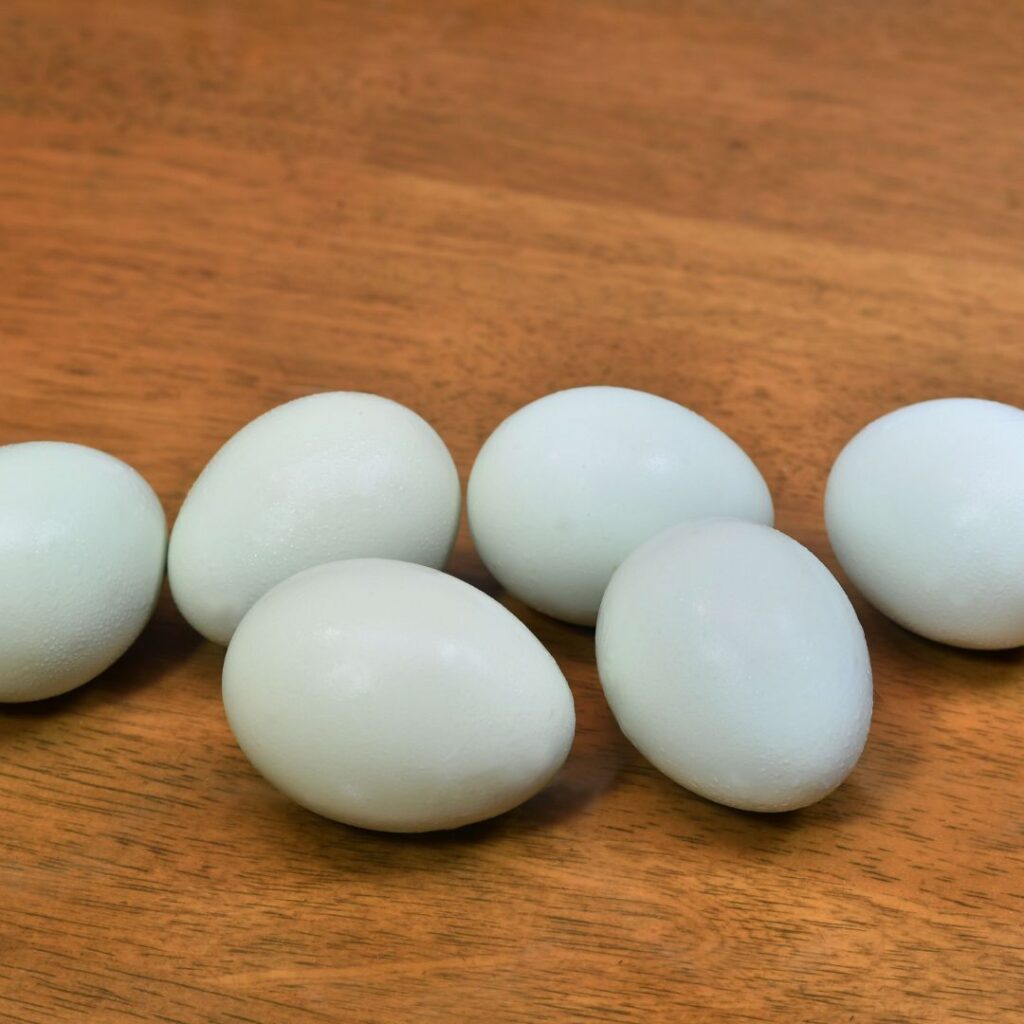
lay beautiful blue eggs
Cream Legbar Hens; Egg Production
As blue egg layers go, the Cream legbar hen is known for its excellent egg production. They are hardy birds and reliable egg-laying hens to have around your hobby farm or backyard flocks.
Does This Chicken Lay Blue Eggs?
The eggs are light to medium blue, and sometimes light green eggs will be in the nesting box. Color can appear different because of the bloom (the protective outer layer of an egg).
When do they start laying eggs? cream legbar laying age
Your Cream legbar hen will begin laying around 20-24 weeks (maturity). However, some may lay early, so we recommend you prepare your nesting boxes. This will give them a chance to be comfortable with this area.
What size eggs are Cream Legbar Eggs?
These blue eggs are medium to large-sized.
How many eggs do Cream Legbars Hens Lay?
Once your hens start laying, you can expect to see about four eggs per week per bird. Egg production annually is around 180-200 realistically.
Some chicken keepers have bragged about how their chickens laid blue eggs over 250 eggs yearly, most likely due to artificial lighting added. Here in the U.S., you’ll see around 200 eggs per year without any simulated conditions. Peak egg production occurs around 4-5 years then gradually decreases.
There are a few reasons chickens stop laying eggs worth knowing about so you can keep an eye on the health of your hens.
are cream legbars broody?
Cream Legbar hens rarely go broody, so you are not likely to have any decline in egg laying like with broody hens.
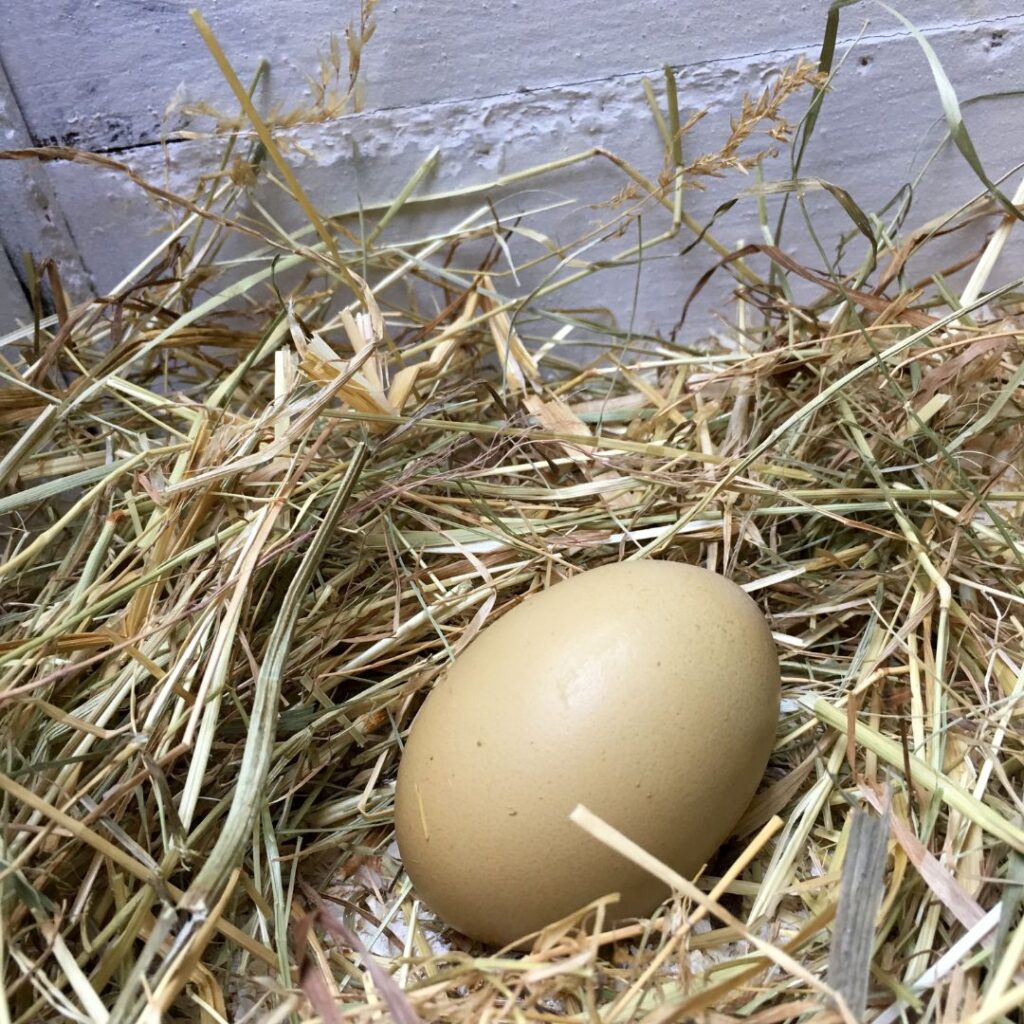
Are They Dual-Purpose Birds
Don’t buy a Legbar if you’re looking for a good meat-production bird. Yes, any chicken can be brought to the market for meat. If you are a homesteader and need to thin out your flock, these birds would be best reserved as ‘soup birds.’
The Chicken Coop for Cream Legbar Chickens
Space
When it comes to chickens, size matters – at least when it comes to their living space. While your Legbars will do fine with 6-8 square feet per chicken in a coop, active breeds like the Cream Legbar need 10-15 square feet or more in an outdoor run.
And it’s important to remember that the more space you can give them, the better! Chickens are not just egg-laying machines – they have individual personalities and enjoy activities like dust bathing and foraging.
Of course, if you allow your chickens to free range during the day, they’ll have less need for a large run.
Perch
Perches should be 8″ minimum for Legbar chickens. You can use various items for perches, including 2x4s, sturdy branches, upturned barrels and buckets, and even old ladders.
Nesting boxes
The right nesting box is essential when providing a comfortable environment for your hens to lay their eggs. One nesting box is recommended for every four hens in your flock. This helps ensure that each chicken has enough room to comfortably lay her eggs without feeling crowded. And remember about regularly changing the bedding in the nesting boxes to keep them fresh and reduce the breakage of those beautiful light blue or light green eggs.
Feeders and Waterers
Feeders and Waterers should be large enough to accommodate your entire flock. We also recommend hanging or placing them on a cement block to keep them off the floors. This will deter pests like ants from crawling inside.
Fencing height
A minimum of 6 feet is an absolute must for the Legbar chickens. They can be flighty when penned, and one good flutter and easily be up and over the fence. Also, protect them from overhead predators like owls and even hawks.
Dust Bath
When raising happy and healthy chickens, it’s important to pay attention to the importance of dust baths. This simple addition to your coop can significantly benefit your flock’s health and happiness. Dust baths help to eliminate parasites and mites, keeping your chickens free from harmful pests. They also play an essential role in maintaining clean and healthy feathers. So next time you’re setting up or maintaining your chicken coop, remember to provide a spot for dust baths filled with non-toxic materials like sand or wood ash.
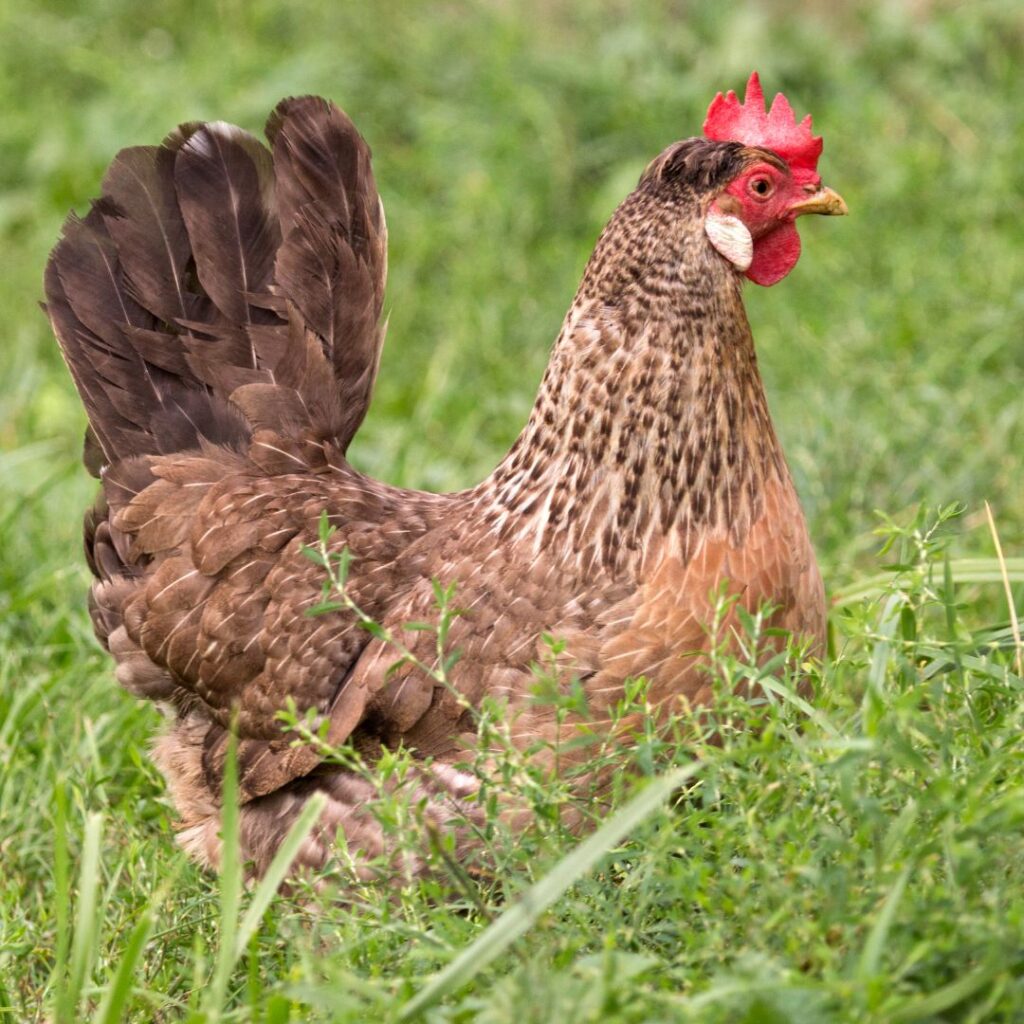
Winter And Summer Chicken Coop Prep
Cream Legbars are a heat-tolerant and cold-hardy breed. However, with their size and space needs, you’ll want to be sure you’re prepared to provide a proper coop and run for their arrival to your flock.
Coop Prep – Having good ventilation in your coop from day one should be a priority. The ventilation will reduce moisture build-up, which can create a damp, freezing environment in the winter. During the summer, moisture build-up retains humidity and increases the ammonia fumes from the urine, which is toxic.
Add windows and doors (screened-in) to your coop for those extra hot days to get fresh air flowing through.
Waterers and Feeders – Year-round, keep water fresh and clean at all times. In Summer, you can add ice to help keep the water cool. During the winter, you may need to change more frequently if the water freezes. You can also consider purchasing a heated waterer or bowl warmer.
Frostbite Precautions – If you have ever spent time around chickens, you may have noticed some of them have colorful, fleshy projections on their faces called wattles. These wattles can be especially vulnerable to frostbite when temperatures dip, as water often drips from their beaks onto the wattles. Roosters with single combs also tend to have larger wattles, increasing their risk of frostbite.
It’s important to note that frostbite can also occur on non-feathered parts of the chicken – their feet and legs are just as susceptible in cold weather conditions.
Adding wet snow or rain into the mix increases the chance of frostbite. Keep an eye on your flock during colder months and provide adequate shelter and protection from moisture to keep them safe and healthy.
Tip: Apply a small dab of petroleum jelly to the wattles to prevent frostbite.
The Chicken Run Area – Tarp, Lean-to built from old plywood, and even tented areas are great ways to protect your chickens from extreme heat, snow, and rain.
Also, be sure the run is shoveled with chickens to find a way around the run in the winter months.
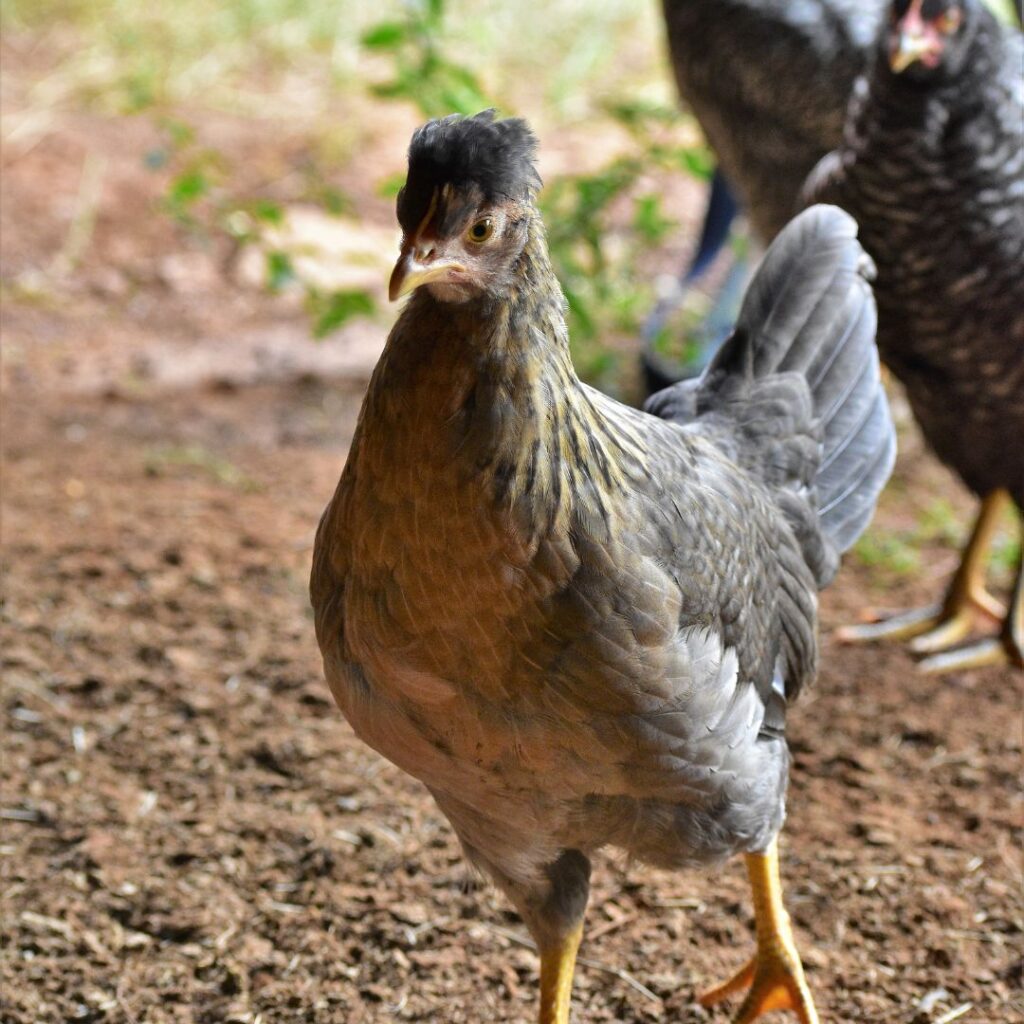
Free-Range and Foraging
If you are looking for a breed of chicken that avoids predators and is comfortable living in a free-range environment, the Crested Cream Legbar might be the perfect choice for your flock. These birds have an inherent ability to forage.
Legbars do best in free-ranging because they’re good foragers and quick to avoid predators.
They can do well in a confined space; however, it’s essential to give them ample room and opportunity to roam, as they are active birds and may become restless or frustrated if confined without sufficient space.
So whether you have acres of open land or a small backyard, the Crested Cream Legbar is an excellent choice for your free-range flock.
Are The Cream Legars O.K. For An Urban Homestead (City Chickens)?
The Cream Legbar honestly does prefer its open space. While legbars will do well in confinement, we understand urban spaces’ limitations. Allowing these hens to forage in your yard could also result in more fencing needs for your garden space.
Noise could be a factor; the Lebars can be noisier if in confinement without a spacious run area or allowed to free range.

Life Expectancy of the Cream Legbar
Generally, a healthy Cream Legbar can live between 7 and 10 years old.
Is The Cream Legbar Right For Backyard Chicken Keepers and Hobby Farmers?
The Cream Legbar chickens are pretty birds that can make a great addition to any flock! They’re known for their high egg production and beautiful blue eggs, but they require more space than some other breeds.
In addition, to its eggs and beauty, the Cream Legbar does well in cold and hot temperatures. This might be the right breed if you’re looking for an active bird with personality.
If you are new to keeping chickens, read our guide for beginners.
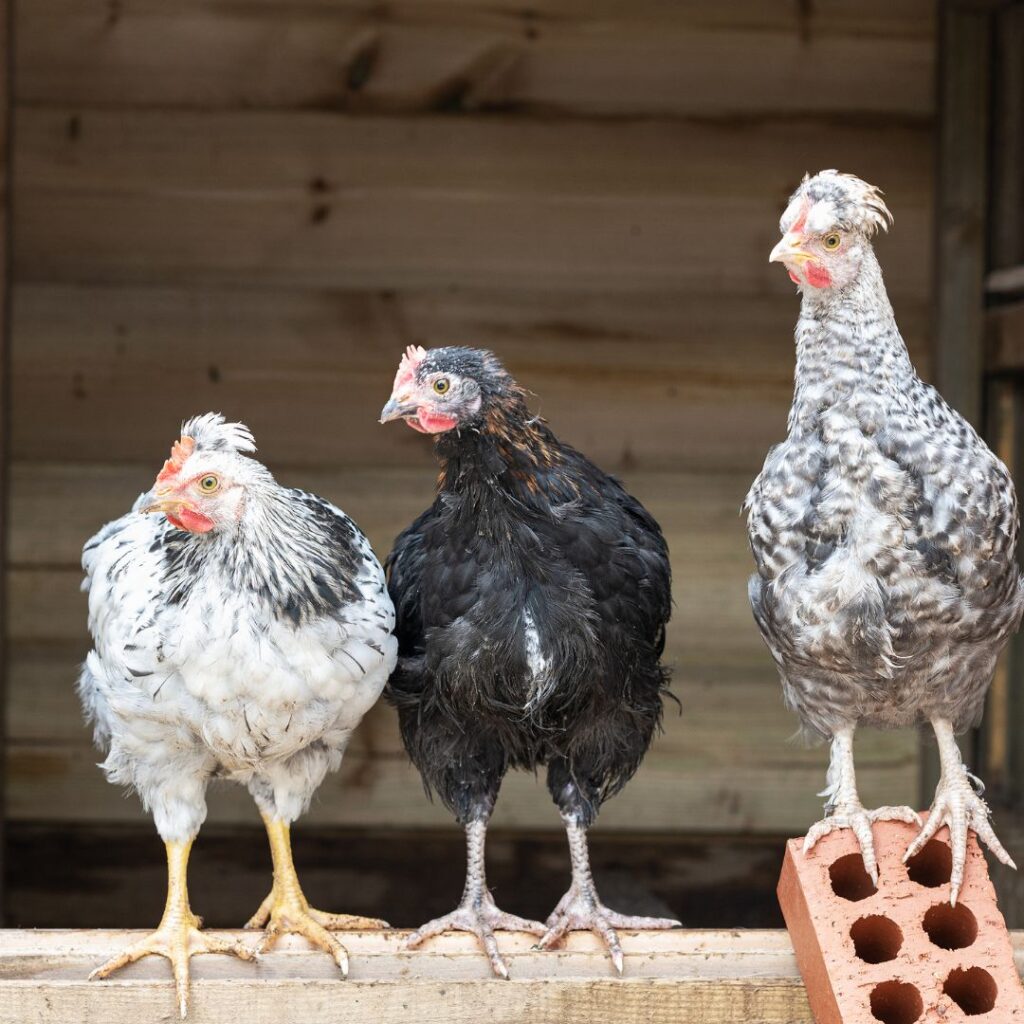
For those looking for a small ornamental chicken to start your hobby flock, check out our articles on the Silver and Golden Sebright Chickens and the Mille Fleur D’Uccle Chickens.
Be Sure To Read About Our 15+ Top Egg Laying Hens
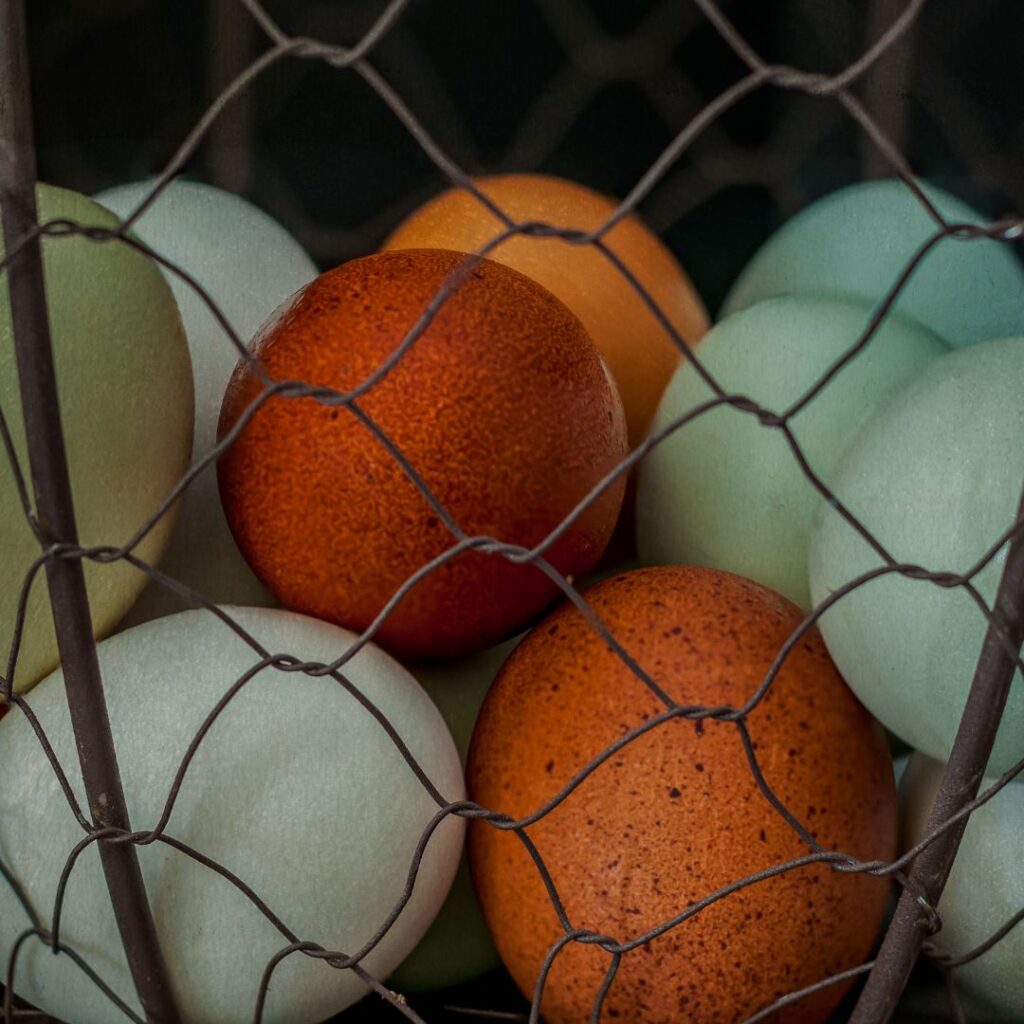
Learn About 15+ Heat Tolerant Chicken Breeds Here.
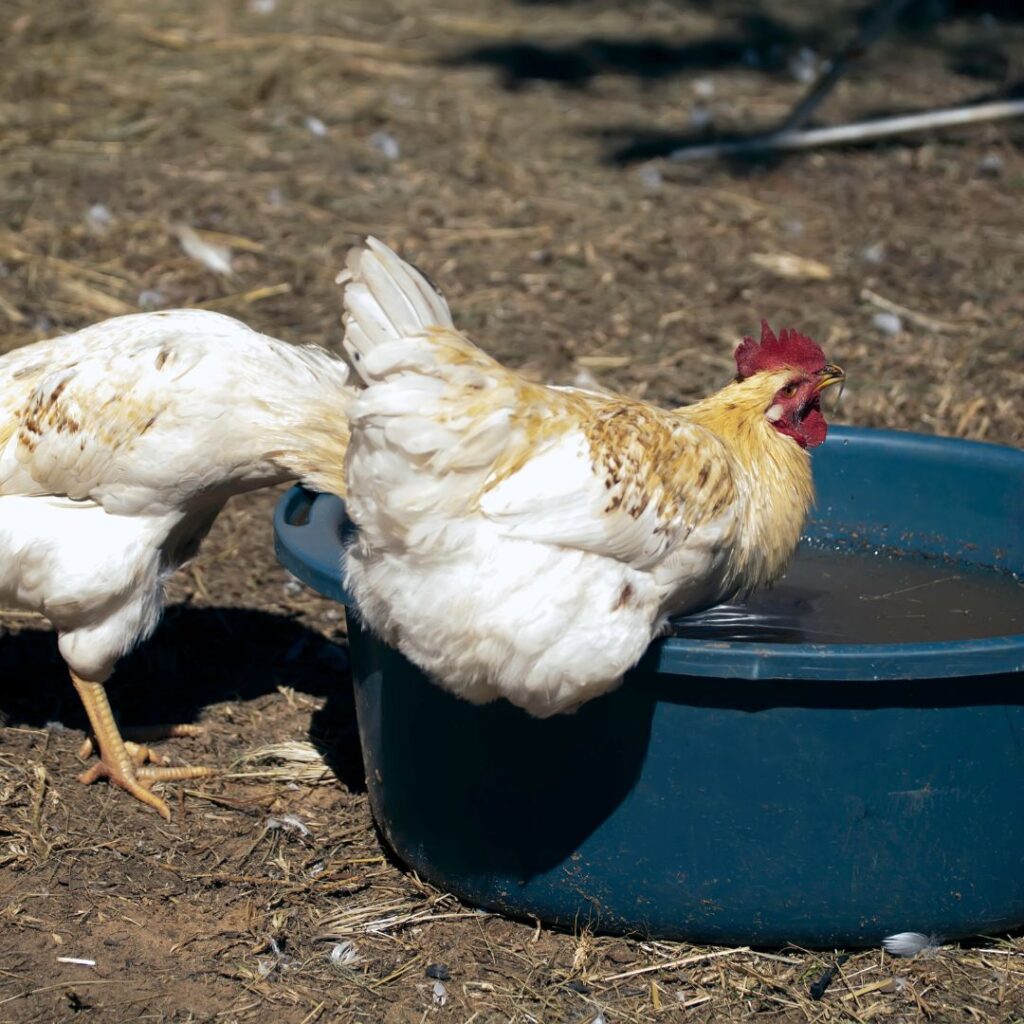

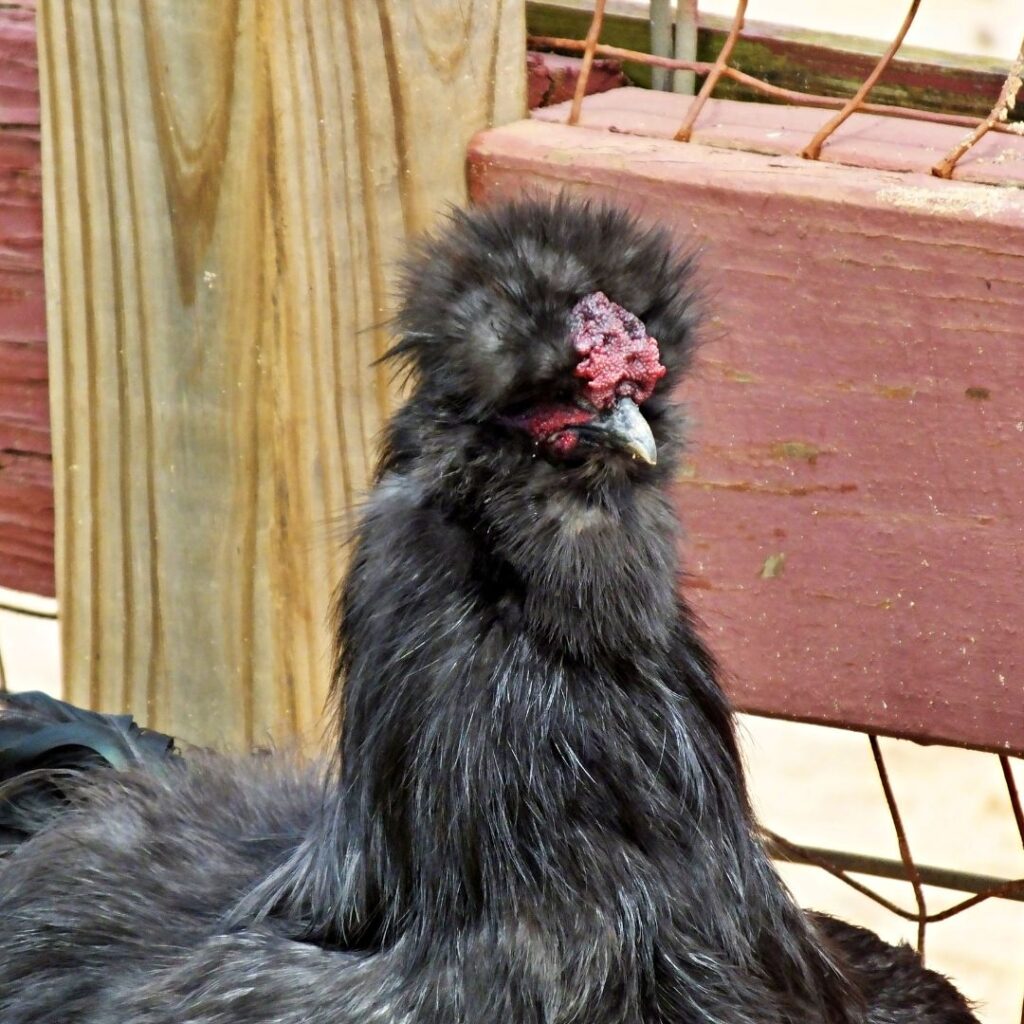

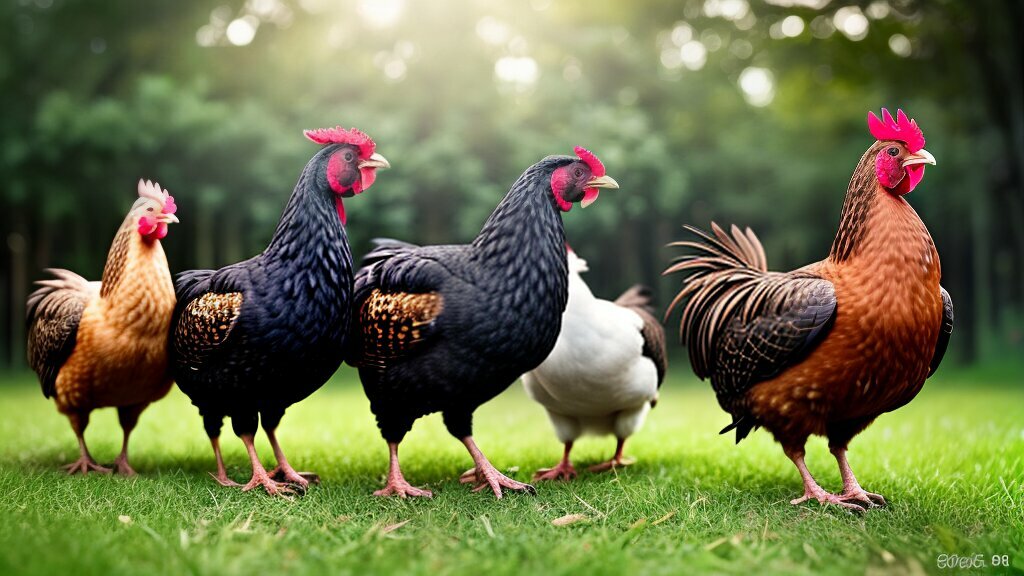
Pingback: Ameraucana Chickens; About These Blue Egg Layers (Not Chicken Americana) - Gilmore's
Pingback: Easter Egger Chicken; Colored Eggs For Days - About This Chicken
Pingback: Leghorn Chickens: What To Know Before Buying One - Gilmore's
Pingback: Golden Laced Wyandotte Chicken; About The Wyandotte Chicken Breed
Pingback: Cornish Chickens: A sweet Heritage Breed - Gilmore's
Pingback: Speckled Sussex Chickens; Is This Breed Right For You?
Pingback: The Black Star Chicken; About Black Sex Links & Sex Link Chickens